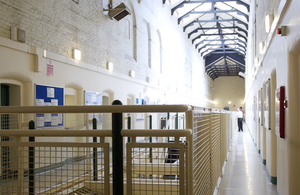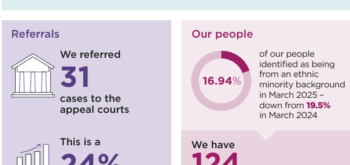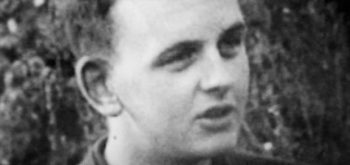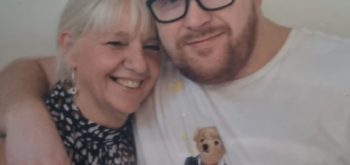Recent high-profile miscarriages of justice like the Post Office Scandal and Andy Malkinson, whose rape conviction was quashed after serving 17 years in prison, should remind us that sending innocent people to prison is a reality of today’s criminal justice system.
While rare, there are many reasons why a jury will return the wrong verdict, and often it’s down to something as simple as human error. From false witness testimonies like those in the Malkinson case, to police corruption as was revealed during the Birmingham Six and the Guilford Four cases, and so-called expert witnesses misleading juries as was the case during Sally Clark and Angela Cannings’ trials – both wrongly convicted of murdering their children.
Failures can take a non-human form like the faulty Horizon IT system which led to 700 British sub-postmasters being found guilty of theft, though the computer can’t take responsibility for the coverup that came after. The manipulation of evidence throughout an investigation and trial can make any innocent person look thoroughly guilty in the eyes of the law.
Quantifying the numbers of people who are victims of miscarriages of justice is a challenge. The University of Exeter’s Evidence Based Justice Lab has created a registry of 468 miscarriages of justice across the UK which totals 2,405 ‘lost years’ with an average of every innocent person serving 5 years in prison.
Figures published in September 2020 show there were 1,336 successful appeals against decisions by Magistrates’ courts and the Court of Appeal in England and Wales between June 2019 and March 2020.
The truly awful aspect of cases is that it can happen to anyone; it could happen to you. But what would you do if the unimaginable did happen, who would help you?
There are few places to turn to, but a tiny charity called Inside Justice is one of them. For many people it is their last resort. Established in 2010 by journalist, Louise Shorter, the organisation receives applications from prisoners who claim they are innocent, and they investigate them in a bid to get the cases back to the Court of Appeal and the convictions overturned.

Louise Shorter
The charity is truly unique in England and Wales as its small casework team are supported by an Advisory Panel made up of some of the best forensic and legal experts in the country. Blood pattern analysts, forensic scientists specialising in DNA and fibre analysis, KCs, barristers, retired police officers, digital forensic experts and a retired Circuit Judge all come together to make an impressive team with a strong track record of doing everything it takes to see a wrongful conviction made right. The Advisory Panel do of all this work on a pro bono basis.
The team of just three paid staff are not short of cases to work on as applications have risen sharply over the last few years, as Inside Justice caseworker Andy Duffin explains: ‘When I first joined in 2017, we received 144 applications in that year and this year, with our projected figures, we’re looking at about 1,020 applications which means we’re now dealing with 85 applications a month.’
The reason for this increase Andy believes, is largely down to the charity’s profile being raised thanks to a popular documentary series Conviction which followed two of the charity’s investigations and aired on Netflix. There was also a BBC Radio 4 Appeal voiced by Oppenheimer actor Tom Conti and a rolling advert in the prison newspaper, Inside Time too. But it was Covid-19 that brought the biggest surge in applications.
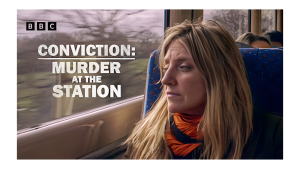
‘It’s understandable’ says Andy. ‘Prisoners were sat in their cells for 23 hours a day with their case papers, and we saw an increase in application letters.’
The applications themselves reveal a lot about the criminal justice system, for example how the ripple effects of legal aid cuts are now making their way into Inside Justice’s mailbox. Legal aid is provided by the government to cover legal costs for those who can’t afford them, but over the last decade the government has cut its legal aid bill from £2.5bn in 2012-13 to £1.8bn in 2022-23.
The alarm bells have been sounded over concerns around access to justice by the legal profession and campaigners for years. In 2013 after The Guardian published a story about the then Secretary of State’s plan to cut legal aid for prisoners it resulted in a furious response from solicitors, experts and those who had suffered a miscarriage of justice like Gerry Conlon (one of the Guilford Four). A few years later, in 2015, Sir Alan Moses, who had been a judge for 19 years, went as far as to say miscarriages of justice were ‘inevitable’ if people were unable to secure skilled legal assistance.
This led to many people leaving the profession, as demonstrated analysis by The Law Society published in 2022. Their figures also suggested the worst is yet to come as they predict the number of duty solicitors will decrease by another 19% by 2025 and the number of firms doing criminal legal aid work will decrease by 16% (150 fewer firms), leaving many people without access to a lawyer when they desperately need one.
Back at Inside Justice Andy is seeing first-hand what happens when the alarm bells are ignored: ‘With the reduction in legal aid we’re seeing an increase in applications, and applicants are saying to us, “I have nowhere to go, I’m not getting any support, my legal team can’t help me” and they see us as their last resort.’
But there’s another, even more worrying trend emerging. Over the last year they’ve noticed more applicants claim they have been pressured by their solicitor to plead guilty.
‘We’re starting to see this increase of, “I was coerced into pleading guilty or I was incorrectly advised by my legal team to plead guilty” and that’s a very difficult hurdle for us’, Andy says.
Those seeking to challenge their conviction are automatically given the right to do so at the Court of Appeal but if they fail and wish to try again, they can make an application to the Criminal Cases Review Commission (CCRC) who can refer back to the Court of Appeal. But the chances of success are notably low.
According to their own figures the CCRC has received 31,333 applications since it open its doors in 1997, just 832 (that’s 2.6%) were referred to the Court of Appeal where 571 applicants were successful.
Arguing the case to the CCRC that you are in fact innocent after you’ve plead guilty because of bad advice would require the applicant’s original legal team to admit they’d failed their client so badly they deserved to be heard again.
Explaining these kinds of procedural hurdles involves some difficult conversations with applicants and their loved ones which Andy has on a weekly basis.
It’s a world away from his old job as a private commercial investigator where he spent more than 40 years running surveillance teams across the UK and further afield, tracking down witnesses in multi-million-pound insurance and financial fraud cases.
Nowadays from his home he takes phone calls and email enquiries from prisoners looking to apply or from distraught loved ones trying to make sense of the unimaginable.
‘I get some heart-breaking calls from really distressed partners and family members whose loved one have just been convicted and they don’t know what the next steps are. They are absolutely torn apart because somebody who’s been in their life all the time, they’re just not there anymore.’
In the week of our interview, as he does every week, Andy has drawn up a list which summarises the applications he’s received. This week it’s 22. They include six murder cases, three rapes, an attempted murder, one stabbing, two Joint Enterprise related convictions and complaints about IPP (Imprisonment for Public Protection) sentences and being recalled to prison.
Most of the applications have come from prisoners themselves or their mothers, although this week one is from a juror who believes his fellow jurors returned the wrong verdict in a rape trial and convicted an innocent person.
The charity relies entirely on donations, so they make sure applications meet their criteria before being passed on to the Head of Casework and interim CEO, Nora Holford.

Nora Holford
Nora is a retired Senior Investigating Officer (SIO) with Thames Valley Police and served more than 32 years in the force before leaving to start her own coaching business in leadership management and pursue her passion for ultra marathons and triathlons.
Last September she ran five marathons in five days across Kenya to raise money for Inside Justice.
You can imagine how that strong will and stamina lends itself to being a good investigator. She joined Inside Justice after watching the ‘Conviction: Murder at the Station’ documentary which featured the case of Roger Kearney, who was convicted of murdering a woman he was having an affair with in Hampshire in 2010. The programme charts the charity’s investigation and exposes numerous police failures including destroying all the vital forensic evidence the Advisory Panel members had hoped to re-test.
Watching it, Nora felt frustrated by what the officers did. Although she admits having a lot of sympathy for SIOs generally and understands the pressures the job brings, but she has no room for compassion for the ones in Roger Kearney’s case.
‘They were lazy’, she says.
‘It was almost like they had one hypothesis: it was Roger that did it, and I’m going to prove that and that’s not the right way. You should always be looking to prove or disprove and if pieces don’t fit like the fact the actual timeframe that he had to commit the murder got smaller and smaller, they should have gone back to the drawing board to rethink but they just remained blinkered.’
Since the documentary aired, the CCRC has rejected Roger’s application to have his case sent to the Court of Appeal. He remains in prison serving a life sentence and maintains his innocence while Inside Justice continues to support him and his family. They have submitted a second application to the CCRC and are awaiting its decision.
They have five other cases currently with the CCRC including their most long-standing applicant, Kevin Nunn.
Kevin was convicted of murdering his girlfriend, Dawn Walker, in 2006 near Bury St Edmunds and was sentenced to a minimum of 22 years. Forensic scientists had been able to retrieve a swab sample which contained semen. They found sperm which Kevin said proved it could not have been his as he had had a vasectomy. The sample was also not tested for DNA at the time.
However, in 2014 a Supreme Court ruling rejected his and Inside Justice’s bid to have the sample tested and from then on police across the country have routinely rejected releasing forensic files to organisations like Inside Justice citing the 2014 ruling as their reasoning. The impact has been devastating and now the road to justice for those who have been wrongly convicted has to pass through the CCRC first.
Nora had her own experience of seeing how close a wrongful conviction can be if you don’t keep an open mind while she was still serving with the police.
‘I remember one of the investigations that I led on involved a lady who was found drowned in the River Kennet in Newbury. At the time she was an alcoholic and there was all sorts of things going on in her life and it got written up as a probable suicide. The coroner released the body, she got cremated and then a fortnight later her alcoholic partner phoned the police on three-nines. It was quite garbled because he was a bit drunk, but he basically said, “I pushed her”.’
What came next was a full investigation combing all the local CCTV footage which thankfully provided a clear albeit very sad story.
‘The guys did a fantastic job because they found a piece of CCTV where you could just see some ripples in the water which we thought was around about the time that she probably fell in. We then backtracked through other footage and eventually found another piece where you could see a little figure all on their own stumbling and walking a bit further, stumbling and then you can see the splash. The phone went off at the same time, so she was probably holding it when she went in.’
‘It was a tragedy, not suicide or a murder. But by proving or disproving what that this chap was allegedly confessing to we actually proved that it was just a tragedy.’
Keeping an open mind, searching for the truth and staying away from the tunnels is advice Nora gives to the team of 12 volunteer caseworkers, most of whom are also retired police officers, the charity relies on to manage the increasing volume of applications.
Inside Justice has only three paid members of staff including Mary Stewart, a retired forensic practitioner specialising in fingerprint analysis with more than 30 years’ experience working at the Metropolitan Police.
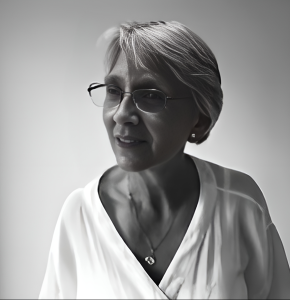
Mary Stewart
In between looking after her five grandchildren, Mary reviews each applicant’s case file methodically, looking for opportunities where new scientific tests or analysis can be carried out or new lines of enquiry pursued. Of course, there are those cases where they’ve exhausted all avenues and there’s nothing more the charity can do.
‘Those are the most difficult phone calls’, Mary says.
‘I had to contact the mother of a boy who had been given a crazy amount of time, something like 20 years in prison in a joint enterprise murder case. This boy hadn’t got out of the car but someone else did and stabbed an individual walking along the road, so all the boys got the same sentence.’
The joint enterprise law has been used since the 1980s to convict people in gang-related cases if defendants could have ‘foreseen’ violent acts by their associates.
‘He was there, he was in the vehicle because his phone records showed that, but he says he was playing a game on his phone, which he probably was, although I think there was a certain amount of awareness that he knew what was going to happen when he got in the car.’
The law is designed in such a way that it’s a very difficult task to get to the Court of Appeal after a joint enterprise related conviction. How can you prove to a jury to the point they are sure you didn’t foresee a crime happening? Add to the fact applicants like this one often reply ‘no comment’ in police interviews, and are reluctant to give evidence against co-defendants, there provides no room for legalistic manoeuvring from even the most talented legal minds.
‘I had to call his mother and let her know we couldn’t take the case forward. She was such a gracious lady under the circumstances and thanked me. It really touched me that one, I’ll still think about it’, recalls Mary.
For years there’s been a vocal public campaign around the unfairness of the joint enterprise law and how its wide net captures many innocent young men. However, despite a Supreme Court ruling in 2016 that the legislation had been wrongly interpreted, nothing much has changed.
It would be easy to feel dissuaded by a system that can so easily create a wrongful conviction but makes the possibility of rectifying it so difficult. However, it’s the successes that keep them motivated, like the case of Patryk Pachecka and Grzegorz Szal.
In 2017 Patryk and Grzegorz were both wrongly convicted of murdering their flatmate in London. They were sentenced to life imprisonment with a minimum term of 18 years, while the real killer escaped. After Inside Justice investigated, they found major failures in the way the crime scene had been interpreted by the police and processed by the attending forensic scientists. The judge also gave incorrect statements about good character which effectively placed the real killer in a much more positive light when he had previous convictions for violence.
CCTV footage captured the two innocent men running away from the scene while the killer chased the victim in the opposite direction and slashed his neck in a nearby street.
This new evidence, combined with excellent investigative journalism by TVN Media, blood pattern analysis by Advisory Panel member Jo Millington’s, legal expertise from Siobhan Grey KC and solicitor Jason Lartey, and the contributions of forensic pathologists Professor Jack Crane and Dr Claas Buschmann, led to Patryk and Grzegorz being found not guilty at their re-trial in 2021.
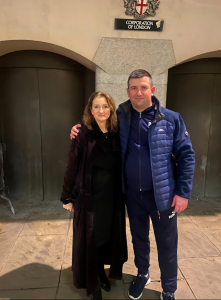
Siobhan Grey KC with Patryk Pachecka after having his conviction for murder quashed
‘This is why I do it’, Andy says, holding a tiny photograph in his fingers. The image is of a Grzegorz and his wife and young daughter who hadn’t even been born when he was convicted.
He sent the charity a short but heartfelt Christmas message: ‘Thanks to you I can also spend it with my family, thank you very much for saving my life.’
Holding the photograph Andy says, ‘I have it pinned above my desk because every time I’m feeling a bit frustrated and a bit down, I look at it.’
‘The words he’s said to us about saving his life, what greater response do you want for the type of work that we do?’.
To find out more about Inside Justice, to donate or make an application please visit their website www.insidejustice.co.uk
